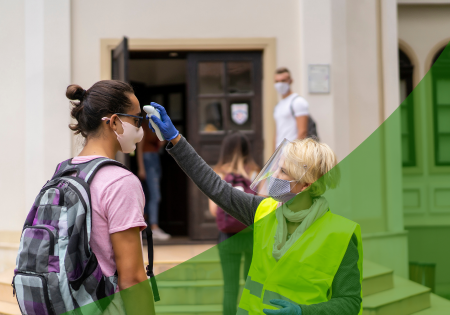“Back to Normal”
It’s what so many of us have longed for so many months. A way to get back to life as normal. Before the masks. Before the Zoom calls. We long for that time where the government stating that UFOs were real would be the leading story, as opposed to barely getting mentioned on the news.
For many of us in education, talking about the “return to normal” has been the topic of conversation personally and professionally. How do we communicate about the return to normal? Sure, for most of us, we are back in schools, but we continue using this phrase to describe summer plans and about a general level of anxiety in society while we see the end of a pandemic in sight.
While we want a return to normal, we won’t accept how things used to be
When we think about it, our goal is to actually have things be “like” they were. In short, when we say we want things back to normal, we mean, we want the best things we remember. Marketers and communication professionals call this “nostalgia marketing.”
This occurs when we talk about how great things were in the ’80s when we only had a few electronics. Our memories of those days seem pure. When brands like Pepsi introduce retro cans to talk about a former generation or Spotify launches its Never Ending story Campaign. We aren’t broadcasting that we want to trade our smartphones for pagers, but we are evoking those memories.
When we are communicating about school, linking the positive memories we have of school, without the challenges is often how we connect a positive view of our school to the present. A simple way to test this theory is to ask about “firsts” ask someone over 30 about their first car and you will often get a feeling of positivity, attitudes of freedom and memory. But ask me if I want to drive the car I bought with 103k miles as a daily-driver and I would panic about its likeliness to breakdown.
For education communication, we are often looking to communicate by harnessing the power of positive past memories.
What Could Back to Normal Mean?
We need to understand that often when we use the word “normal”, we usually mean one of three things:
- Statistical normal – “2.3 children per family per house-hold.”
- Aspirational normal – “We want to get our school back to normal.”
- Functional normal – “It’s normal to be upset about an increase in injustice.”
As classrooms begin to reopen, we need to be careful about how we use the word normal. As we consider the diversity, equity and inclusion elements of our language, “normal” is a term that often can be very accusatory.
Understanding how to link the past with the future is a challenge to communicate how things “could be”. A great example is Coke’s commissioning of George the Poet for their #OpenLikeNeverBefore campaign in 2020.
Exercise:
Ask students: “what is one thing they used to do before the pandemic that they can’t believe they did?”
Bonus: Create a short video explaining the outrageousness of that activity.
We need to focus on how we message the positive elements of what we miss. Try asking students or faculty, “what do you miss most about what used to be?” These open-ended, non-accusatory questions are great ways to discover new content ideas.
Open-ended questions can often form the bedrock of a story. Follow these up with questions like “what would you like to remember about the things that have changed in 2020?” When you build on the answers and explore new avenues of ideas, you start to show progression and story-telling for your communication strategy.
We don’t aspire to be normal, but perhaps society is becoming more comfortable saying we collectively want something altogether better. We believe schools are the leaders in the vision for how things could be different and it starts with communication.
